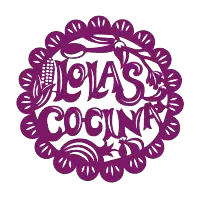Blood Orange Paloma Recipe + 5 Fun Facts About Tequila on National Tequila Day
¡Hola, hola! After spending a month in Mexico, I returned reenergized and inspired with new ideas and recipes just in time for National Tequila Day. To celebrate, I’m sharing five fun facts about tequila and a delicious recipe. Since I came home to a house full of familia, we’ll be sipping on this Blood Orange Paloma all day long. ¡Salud!
Fun Stats. Mexico currently exports tequila to more than 120 countries, which generates more than 70,000 jobs at home. Given that a large portion of the tequila-making process is still done by hand, this creates jobs and opportunities. United States is the spirit’s largest consumer. Thank goodness we’re neighbors!
Appellation of Origin. Tequila can only be made in five regions in Mexico. Approximately 80% comes from the state of Jalisco, while the other 20 is produced in Guanajuato, Michoacán, Nayarit, and Tamaulipas. How many of you thought it could only be made in Jalisco like I did?
About Agave. Unlike mezcal, which can be made from a number of agave plants (there are over 200 varieties and new ones still being discovered!), tequila can only be made from blue agave, or agave tequiliana weber, which was first described and classified by French botanist Frédéric Albert Constantin Weber in 1902. The blue agave can take between eight and 12 years to reach maturity and a new plant must be planted once harvested, so sip wisely.
Tequila vs. Mezcal. Tequila is technically mezcal, but mezcal isn’t always considered tequila. If a spirit is made from an agave plant, it can be called mezcal, but in order to be considered tequila, it must be made from the blue agave plant. Also, while many of us are used to sipping on tequila with a slice of limón, mezcal is traditionally served with an orange slice sprinkled with sal de gusano.
100% Agave Tequila vs. Tequila. Labeling can be confusing, so if you see a bottle labeled with “100% agave tequila” or “100% agave” this means that the spirit is fermented and distilled from only blue weber agave. Otherwise, if the spirit is simply labeled, “tequila,” this means that 51% of the spirit is fermented and distilled from blue weber agave while the other 49% is made from other agaves, corn, and cane sugars. I like to keep it 100.
Blood Orange Paloma Recipe
Ingredients:
3 blood oranges
1 grapefruit
1 lime
2 tablespoons agave
12 ounces sparkling water
Tequila Cazadores Blanco
Preparation:
Rim glass with agave and turbinado sugar. Serve equal parts citrus juice and sparkling water + Tequila Cazadores Blanco (to taste) over ice. Stir, garnish, and enjoy.
Photos by Cacey McReavy // Filter: me
Many thanks to Cazadores for sponsoring this post; recipe and opinions are my own.

Lola Wiarco Dweck
Lola is a Mexican-American recipe developer, writer, and cooking instructor who loves sharing her culture with the world. Growing up in California and spending summers in Mexico, Lola celebrates her family’s Mexican recipes and vibrant culture through Lola’s Cocina.












